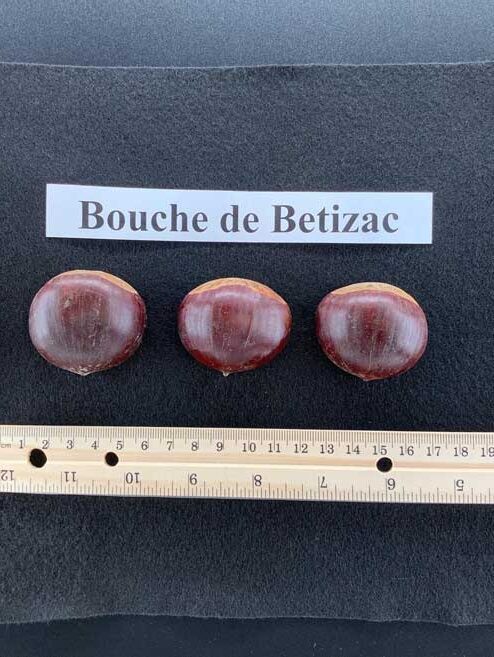Bouche de Betizac

Bouche de Betizac
‘Bouche de Betizac’ (C. sativa × C. crenata) is an open-pollinated seedling of the French cultivar ‘Bouch Rouge’ and a C. crenata pollen parent. It was introduced to the United States by Craddock and Pellegrino (1992). Grafted trees have been planted widely in the western United States, but not in the Midwest. The tree has vigorous, straight growth. It is noted to handle the heat of the California central valley very well, but it also performs well in cooler climates. Nuts fall mid-season in warm climates. ‘Bouche de Betizac’ is pollen-sterile. It produces very broad, dark brown nuts that peel well and have good flavor. Ramets in the UMCA repository have a nut size ranging from 20 to 25 g. Three nuts are standard per bur (Nave, 1998). Nuts in the center of burs are usually flat. ‘Bouche de Betizac’ displays field immunity to Asian gall wasp (Torello-Marinoni et al., 2018). Grafted trees have been planted widely in the western United States, but not in the Midwest. ‘Bouche de Betizac’ seedlings have been planted in the Midwest, but with tempered expectations because they were pollinated with C. sativa.




